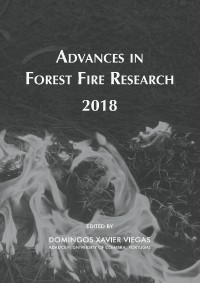Please use this identifier to cite or link to this item:
https://hdl.handle.net/10316.2/44655| Title: | High Resolution Seasonal Forest Fire Danger mapping using WRF forecasts for Greece: a tool for forest fires prevention planning and fire risk management support | Authors: | Varela, Vassiliki Vlachogiannis, Diamando Sfetsos, Athanasios Karozis, Stelios Gounaris, Nikolaos Sphyris, Angelos |
Keywords: | Seasonal meteorological forecast;FWI;fire danger mapping;fire prevention | Issue Date: | 2018 | Publisher: | Imprensa da Universidade de Coimbra | Journal: | http://hdl.handle.net/10316.2/44517 | Abstract: | The Fire Weather Index, FWI, which is part of the Canadian Forest Fire Danger Rating System(CFFDRS), has been validated and recognized worldwide as one of the most trusted and important indicators for fire danger mapping. The classic use of the FWI is associated with the daily fire danger mapping, based on meteorological measurements, while in recent research papers this indicator has been used with forecasted climatic data for studying the changes in the occurrence and intensity of natural disasters. (Climate change Impacts Study Committee, 2011. The purpose of this work is the calculation of the Canadian FWI system indices combined with a state-of-the-art seasonal meteorological forecasting model, for predictive high resolution fire danger mapping, as a tool to design medium-term prevention planning. More specifically, the current paper presents a methodology for the calculation of a series of seasonal forecasted maps of meteorological fire danger, for the fire season (May-October) 2018, for Greece, using the Fire Weather Index (FWI) of the Canadian System CFFDRS. To this end, five components that account for the effects of fuel moisture and wind on fire behaviour have been calculated and investigated, namely, the Drought Code (DC), the Fine Fuel Moisture Code (FFMC), the Built Up Index (BUI), the Initial Spread Index (ISI) and FWI for the referenced period. The meteorological data needed for the calculation of FWI are produced from high resolution simulations with the WRF model (v3.5.1), for a period of six (6) months, using a grid spacing of 5x5 km covering the whole country. The above referenced indices are calculated for every day of the fire season. Subsequently, from the mean value of the maps of seven (7) days, a weekly map is calculated, which constitutes the representative, final map for each index. The maps can be calculated at the beginning of the fire season and for its entirety. Hence, the FWI system values can be provided at three time levels as weekly, monthly and seasonal forecasts. Appropriate classification of FWI values yields estimation of the Forest Fire Danger. The calculated FWI system components and Forest Fire Danger are important to support decisions, about the prevention and management of forest fires, made by the local and central authorities of the country. Acknowledgment: The current work is carried out in the framework of project SERV_FORFIRE funded through H2020 ERA4CS ERA-NET and the European Commission (Grant Agreement 690462). | URI: | https://hdl.handle.net/10316.2/44655 | ISBN: | 978-989-26-16-506 (PDF) | DOI: | 10.14195/978-989-26-16-506_138 | Rights: | open access |
| Appears in Collections: | Advances in forest fire research 2018 |
Files in This Item:
| File | Description | Size | Format | |
|---|---|---|---|---|
| high_resolution_seasonal_forest_fire_danger_mapping.pdf | 834.64 kB | Adobe PDF |  |
Items in DSpace are protected by copyright, with all rights reserved, unless otherwise indicated.
